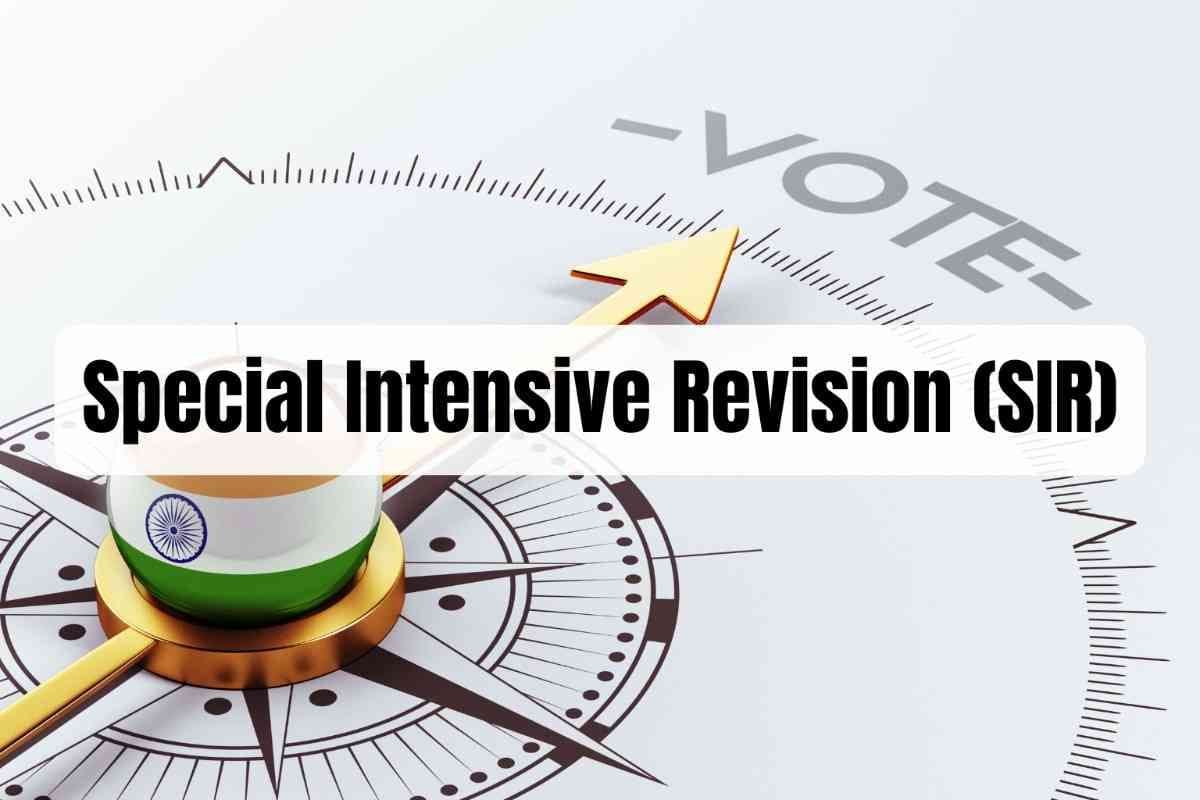Constitution Day of India 2025: National Festival of Constitutional Values
Nov, 2025
•4 min read
Why in the News?
Constitution Day is observed on 26 November to mark the adoption of the Indian Constitution in 1949. Constitution Day 2025 celebration will take place in the Central Hall of Samvidhan Sadan, reaffirming India’s commitment to constitutional values and democratic traditions.
Why Cover this Topic for UPSC?
- Relevant for UPSC Prelims
- Relevant for GS paper II (Polity and Governance)
- Important for the Essay on democracy and constitutionalism
- Useful for Interview discussions on values and institutions
About the Constitution of India
The Constitution is the supreme law of India. This is a written document which lays down the framework demarcating fundamental basic code, structure, procedures, powers, and duties of the Government and its organisations and rights and duties of the citizen.
Key Facts about the Indian Constitution:
- It was originally adopted on 26th November 1949 by the Constituent Assembly of India.
- It came into force on 26th January 1950 (celebrated as Republic Day).
- The Indian Constitution is the longest written constitution in the world.
- It contains a Preamble, 448 Articles divided into 25 Parts, and 12 Schedules.
- Before 1949, it contained 395 articles in 22 parts and 8 schedules.
- The constitution provides justiciable (enforceable) Fundamental Rights and non-justiciable Directive Principles.
- It blends features from various world constitutions, such as those of the USA, Britain, Ireland, Canada, and Australia.
Also read: Removal or Impeachment Process of Judges in India
Why is Constitution Day Celebrated?
Constitution Day, also called Samvidhan Divas, honours the day when the Constituent Assembly adopted the Constitution of India in 1949. The Government of India officially declared 26 November as Constitution Day on 19 November 2015.
- To promote constitutional literacy and awareness among citizens about their fundamental rights and duties.
- To emphasise the importance of the rule of law and democratic governance in the country.
- To encourage citizens to read and understand the Preamble to the Constitution.
- To strengthen commitment to the principles of justice, liberty, equality, and fraternity.
- To celebrate India's unique journey as a diverse, democratic nation.
- To inspire young citizens, especially students, to participate in strengthening Indian democracy.
- To remind the government and institutions about their duty to uphold constitutional values.
Also read: Citizenship of India: Meaning, Rights, Duties, Acquisition & Loss
Key Digital Releases During Constitution Day 2025
Constitution Day 2025 will be celebrated as a national festival of constitutional values, with Indians in every corner of the country and across the world. The following releases are planned in digital mode during the Constitution Day function:
| Digital Release | Prepared By |
|---|---|
| Constitution of India in 9 languages- Malayalam, Marathi, Nepali, Punjabi, Bodo, Kashmiri, Telugu, Odia, and Assamese | Legislative Department |
| Commemorative booklet "भारत की संविधान से कला और कैलीग्राफी" (Hindi version) | Ministry of Culture |
The programme will also include the Reading of the Preamble led by the President.
Evolution Timeline of the Indian Constitution
The Indian Constitution was the result of years of struggle, debates, and careful planning by visionary leaders.
- 1934: M.N. Roy first proposed the idea of a Constituent Assembly for India.
- 1938: Jawaharlal Nehru declared that India's Constitution must be framed by a Constituent Assembly elected by the people.
- 1940: The British Government accepted the demand through the August Offer.
- 1946: The Cabinet Mission Plan laid down the framework for forming the Constituent Assembly.
- December 9, 1946: First meeting of the Constituent Assembly held; Dr Sachchidananda Sinha became the temporary president.
- December 13, 1946: Jawaharlal Nehru moved the Objectives Resolution that later became the Preamble.
- January 22, 1947: Objectives Resolution unanimously adopted.
- August 29, 1947: Drafting Committee formed with Dr B.R. Ambedkar as Chairman.
- February 21, 1948: First draft of the Constitution prepared, containing 315 articles and 8 schedules.
- November 26, 1949: Constitution of India adopted by the Constituent Assembly.
- January 24, 1950: Final session held; members signed the Constitution in Hindi and English.
- January 26, 1950: The Constitution came into force, making India a sovereign democratic republic.
Also read: Article 370 of the Indian Constitution: 6 Years After Abrogation
Key Features of the Indian Constitution
The Indian Constitution has several important features that make it strong, inclusive, and democratic. These key elements guide how the country works.
- Longest Written Constitution: Contains detailed provisions covering all aspects of governance.
- Sovereign, Socialist, Secular, Democratic Republic: Declares India's fundamental character through the Preamble.
- Federal Structure with Unitary Features: Powers are divided between the Centre and states, but the Centre is stronger during emergencies.
- Parliamentary Form of Government: Executive responsible to the legislature; the Prime Minister heads the Council of Ministers.
- Fundamental Rights: Part III (Articles 12-35) guarantees six fundamental rights to all citizens.
- Directive Principles of State Policy: Part IV (Articles 36-51) provides guidelines for the government to create a welfare state.
- Fundamental Duties: Part IV-A (Article 51-A) lists eleven duties for citizens.
- Independent Judiciary: The Supreme Court acts as guardian of the Constitution with the power of judicial review.
- Single Citizenship: All Indians have single citizenship despite the federal structure.
- Universal Adult Suffrage: Every citizen above 18 years can vote.
Also read: Constitutionalism in India | UPSC Polity Concepts
What Makes the Indian Constitution Distinctive?
“A Constitution, like a machine, is a lifeless thing. It works only with the motion imparted to it, and therefore the people become partly responsible for its failure.” — Dr Rajendra Prasad
Building on this idea, the Indian Constitution is distinctive because the framers selectively borrowed successful principles from around the world and then moulded them to suit India’s diverse social, political, and cultural realities.
- Blend of Rigidity and Flexibility: Can be amended, but protects basic structure.
- Government of India Act, 1935: The Single largest source providing a federal scheme and a judicial structure.
- Basic Structure Doctrine: Established by the Supreme Court in the Kesavananda Bharati case (1973) to protect core constitutional principles.
- Independent Constitutional Bodies: Establishes autonomous institutions like the Election Commission, Comptroller and Auditor-General (CAG), and Union Public Service Commission (UPSC) to safeguard democratic governance.
- Integrated and Independent Judiciary: Single integrated judicial system with the Supreme Court at the apex, administering both Union and State laws through a unified hierarchy.
- Three-Tier Federalism: First Constitution in the world to establish three tiers of government: Union (Central), State, and Local governments (Panchayats and Municipalities).
Also read: Fundamental Duties (Article 51A) in the Indian Constitution | UPSC Polity Notes
Most Important Components of the Indian Constitution
Several parts of the Constitution form its backbone and are essential for understanding how India functions as a democracy.
- Preamble: Declares India as a Sovereign, Socialist, Secular, Democratic Republic; outlines justice, liberty, equality, and fraternity.
- Part III: Fundamental Rights (Articles 12-35): Right to Equality, Right to Freedom, Right against Exploitation, Right to Freedom of Religion, Cultural and Educational Rights, Right to Constitutional Remedies.
- Part IV - Directive Principles (Articles 36-51): Guidelines for the state to ensure social and economic justice.
- Part IV-A - Fundamental Duties (Article 51-A): Lists eleven duties for citizens added by the 42nd Amendment.
- Part V - The Union: Structure and powers of the Central Government, President, Parliament.
- Part VI - The States: Structure and Powers of State Governments.
- Seventh Schedule: Three lists dividing powers - Union List, State List, Concurrent List.
- Article 368: Provides the procedure for amending the Constitution.
UPSC Prelims Practice MCQ on Constitution of India
QUESTION 1
Easy
Who is known as the "Father of the Indian Constitution"?
Select an option to attempt
What Makes the Indian Constitution a "Living Document"?
The Constitution is called a living document because it can grow and change with time, adapting to the needs of the people while protecting core values.
- Amendment Procedure under Article 368: Allows Parliament to modify the Constitution as per changing needs.
- Flexibility with Stability: Neither too rigid nor too flexible; strikes a balance.
- Over 100 Amendments: The Constitution has been amended 106 times, showing its adaptability.
- Judicial Interpretation: Supreme Court expands the meaning of rights through landmark judgments.
- Response to Social Changes: Adapts to technological advancements and evolving societal needs.
- Basic Structure Protected: Core principles cannot be destroyed even through amendments, as established in the Kesavananda Bharati case (1973).
- Meets Current Demands: Addresses contemporary challenges like digital rights, environmental protection, and gender equality.
Example: Right to privacy recognised under Article 21; decriminalisation of homosexuality; 103rd Amendment for EWS reservation; 73rd and 74th Amendments for local self-governance.
UPSC Mains Practice Question
Analyse the significance of Constitution Day (26 November) in contemporary India. How does it contribute to strengthening democratic values and constitutional awareness among citizens?
Evaluate Your Answer Now!Way Forward
The Constitution is not a mere lawyers' document; it is a vehicle of Life, and its spirit is always the spirit of the Age- B.R Ambedkar.
In 2025, as India marks 76 years of its Constitution, young people and citizens must understand the Constitution, vote responsibly, and question any action that goes against its values.
We, as citizens, must protect secularism, federalism, and people’s rights. The Constitution belongs to all of us, and it is our duty to follow its values and ensure justice, equality, liberty, and fraternity in daily life.
Start Your UPSC Preparation with SuperKalam
SuperKalam is your AI-powered personal mentor, keeping your preparation disciplined, focused, and effective with:
- Instant Mains answer evaluation
- Instant doubt resolution
- Personalised guidance
- Unlimited MCQs and PYQs
- Progress tracking through daily goals, streaks, and leaderboards.
Related Blogs
![Vijay Diwas 2025: Why 16 December is Celebrated [UPSC Current Affairs]](/_next/image?url=https%3A%2F%2Fblog-media.superkalam.com%2FVijay_Diwas_2631842d69.jpeg&w=3840&q=75)
Vijay Diwas 2025: Why 16 December is Celebrated [UPSC Current Affairs]
Dec, 2025
•6 min read

Special Intensive Revision (SIR) of Electoral Rolls: Definition, Objectives, Significance, & Challenges
Dec, 2025
•4 min read

UNICEF Day 2025: 79 Years of Global Commitment to Child Rights & Protection
Dec, 2025
•4 min read